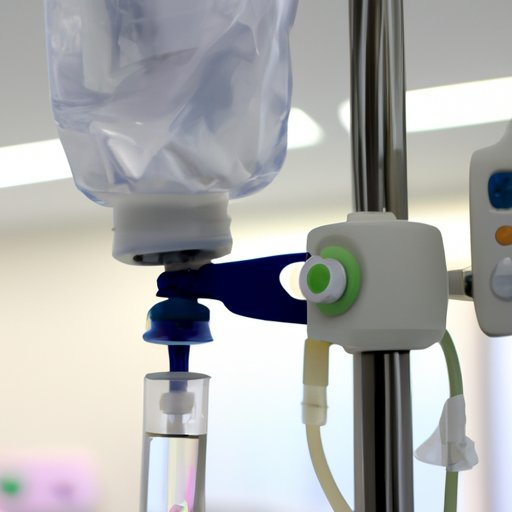
Introduction
Chemotherapy, or “chemo,” is a cancer treatment that uses drugs to kill cancer cells. Depending on the type and stage of cancer, patients may receive chemotherapy for several weeks or months. In this article, we will provide a comprehensive guide to chemotherapy treatment length and what patients can expect during the process.
Step-by-Step Guide to the Chemotherapy Treatment Process
The process of chemotherapy typically involves a series of appointments with a healthcare provider. During the first appointment, patients will undergo tests to determine their overall health and the stage of their cancer. From there, a treatment plan will be developed, which will include information on how long the patient will need to receive chemotherapy.
Chemotherapy drugs are usually given in cycles, meaning patients receive a dose of drugs and then have a break before the next cycle begins. The length of each cycle can vary, but typically, patients receive chemotherapy every two to four weeks for a period of several months.
In addition to receiving drugs, patients will also need to schedule appointments for blood tests and imaging scans to monitor their progress. Additionally, patients should expect to experience side effects from chemotherapy, such as nausea, fatigue, and hair loss.
Comparison of Different Chemotherapy Protocols
There are several different types of chemotherapy regimens, each with its own set of benefits and drawbacks. In general, shorter treatment protocols involve fewer drugs and cycles of chemotherapy, while longer treatments may be necessary for more advanced cancers.
For example, some patients with breast cancer may receive chemotherapy for several months, while patients with acute leukemia may need treatment for up to two years. Shorter protocols may be less taxing on the body and have fewer side effects, but longer treatments may be necessary to ensure that all cancer cells are eliminated.
Factors that Influence Chemotherapy Treatment Length
Several factors can influence how long a patient needs to receive chemotherapy. In addition to the type of cancer being treated, the stage of the disease can also impact treatment length. Patients with advanced cancer may need longer courses of treatment than those with early-stage disease.
Other medical conditions can also impact how long chemotherapy treatment takes. Patients with chronic health conditions, such as heart disease or diabetes, may require special monitoring and adjustments to their treatment plan. Additionally, patients who are older or who have weakened immune systems may need longer courses of chemotherapy to achieve remission.
Overview of Chemotherapy Administration
Chemotherapy can be administered in several different ways, depending on the type of drugs being used and the stage of the cancer being treated. In most cases, chemotherapy is given intravenously (through an IV), either in a hospital or outpatient setting.
Some chemotherapy drugs can also be taken orally, in the form of a pill or liquid. Oral chemotherapy can be more convenient for patients who do not want to spend prolonged periods in a medical facility, but it can also be more difficult to monitor the effectiveness of the treatment.
Other chemotherapy drugs may be given as injections or topical treatments, depending on the type of cancer being treated and the location of the disease.
Personal Essay/Narrative
One patient who underwent chemotherapy treatment for breast cancer shared her experience with us. She explained that her treatment lasted for six months, during which time she received chemotherapy every three weeks. While the treatment was challenging both physically and emotionally, she credits her healthcare team for guiding her through the process.
She also acknowledged the importance of having a supportive network of family and friends. “Chemotherapy can be a long and difficult process,” she said. “But having people who care about you and are rooting for you can make a world of difference.”
Conclusion
Chemotherapy treatment length can vary depending on several factors, including the type and stage of cancer, overall health, and treatment protocol. Patients and families should talk to their healthcare provider about what to expect during the treatment process, including the length of treatment and potential side effects. With the right support, patients can successfully navigate chemotherapy and emerge on the other side with renewed health and hope.





